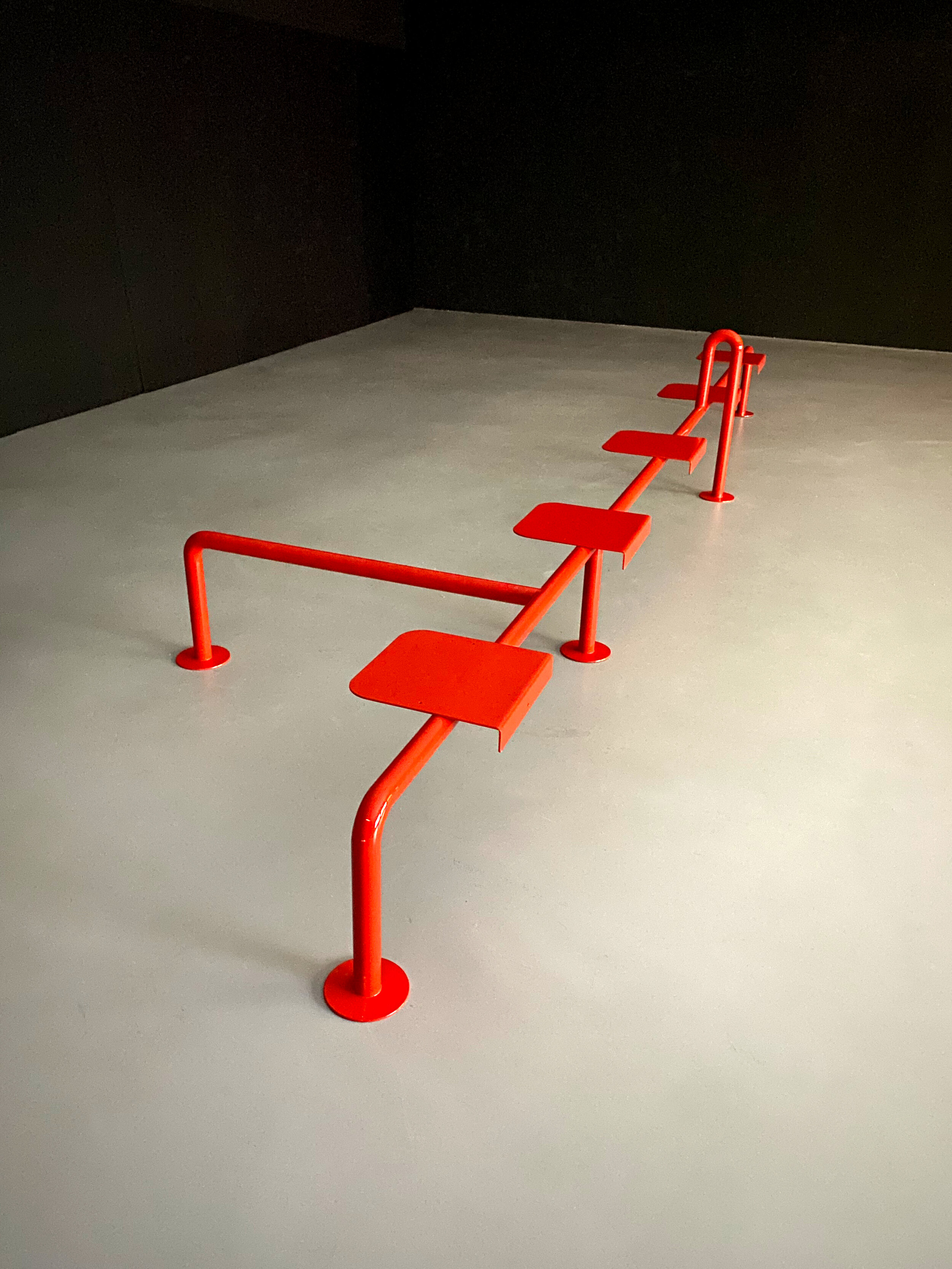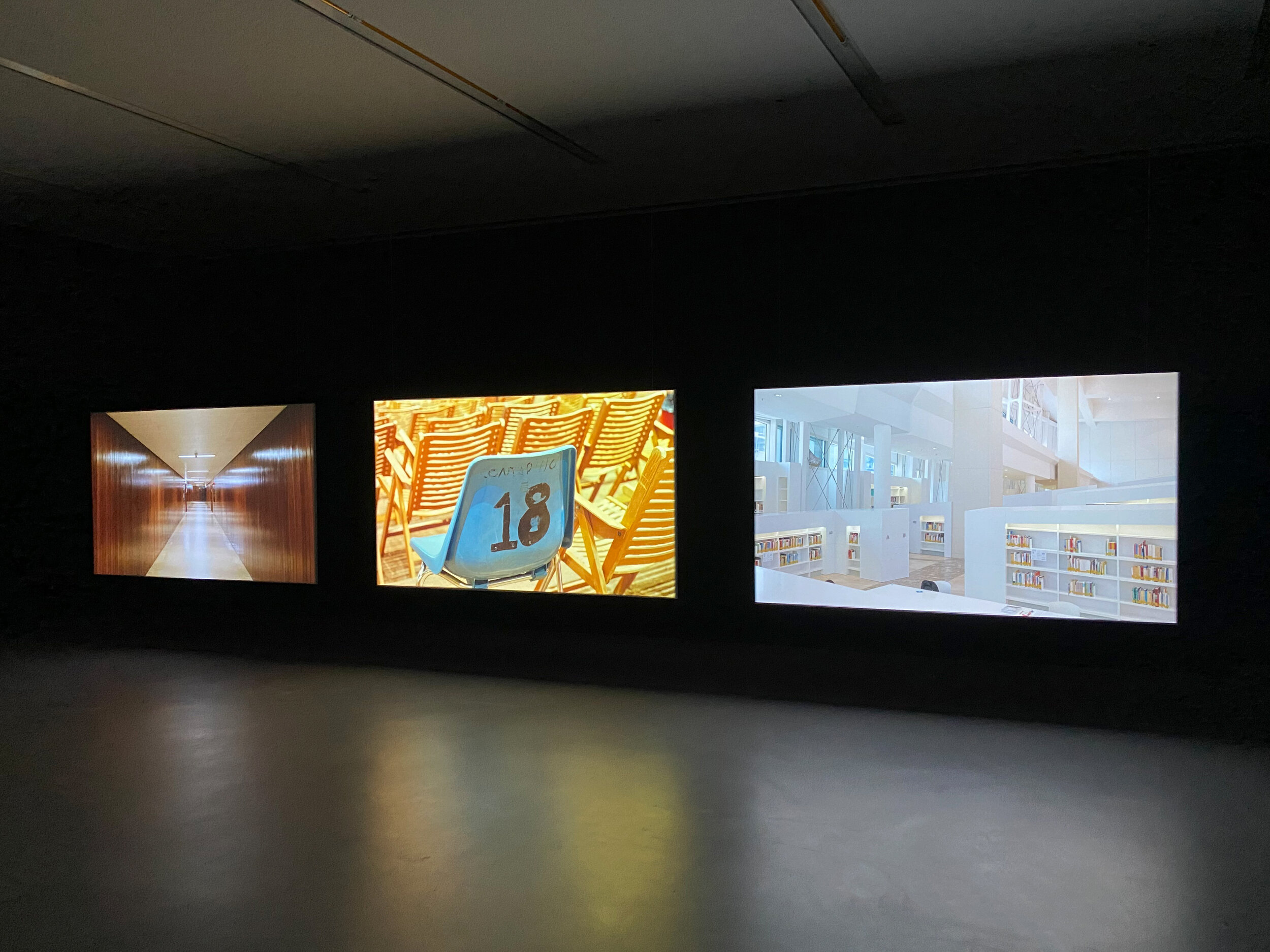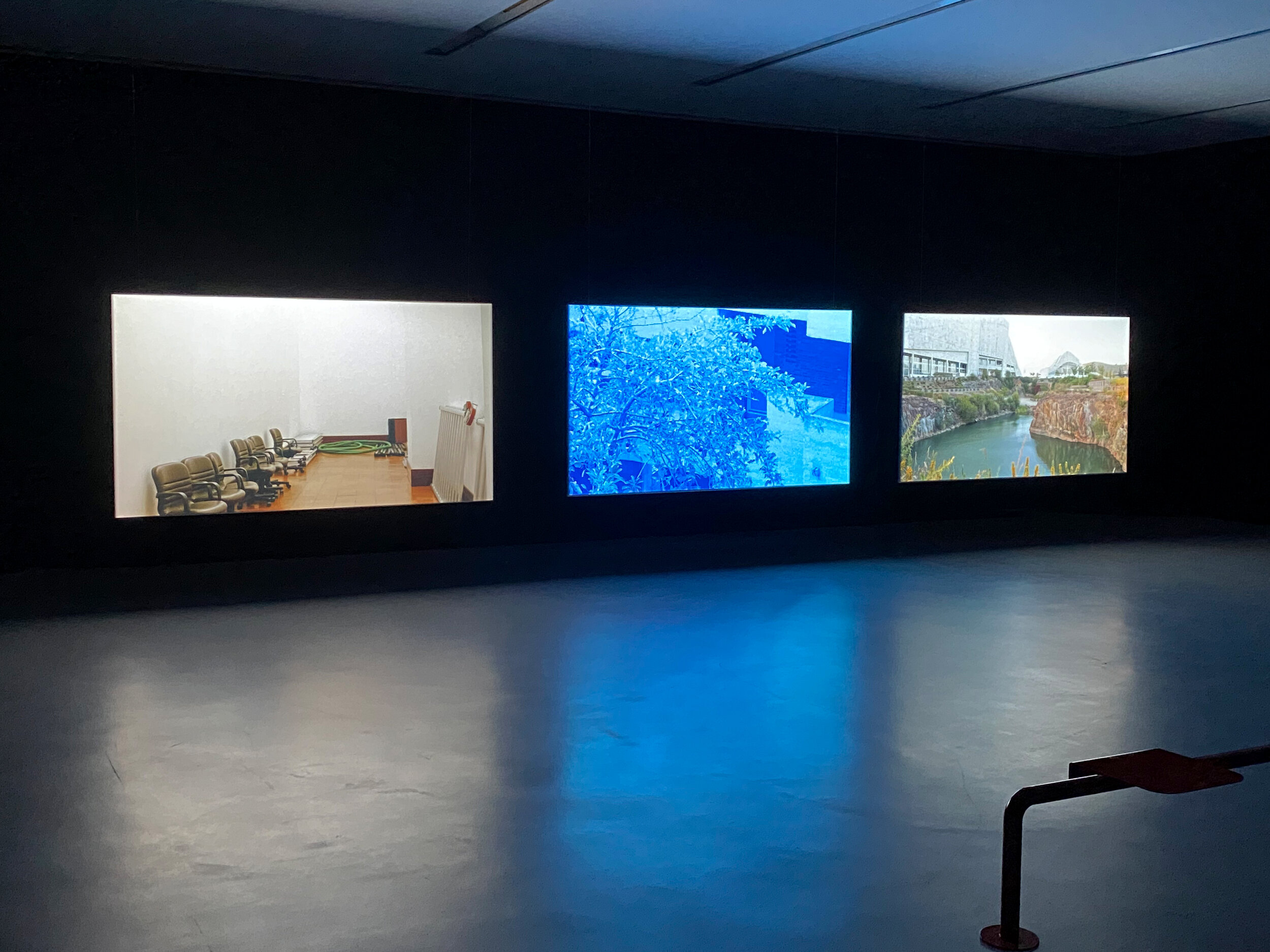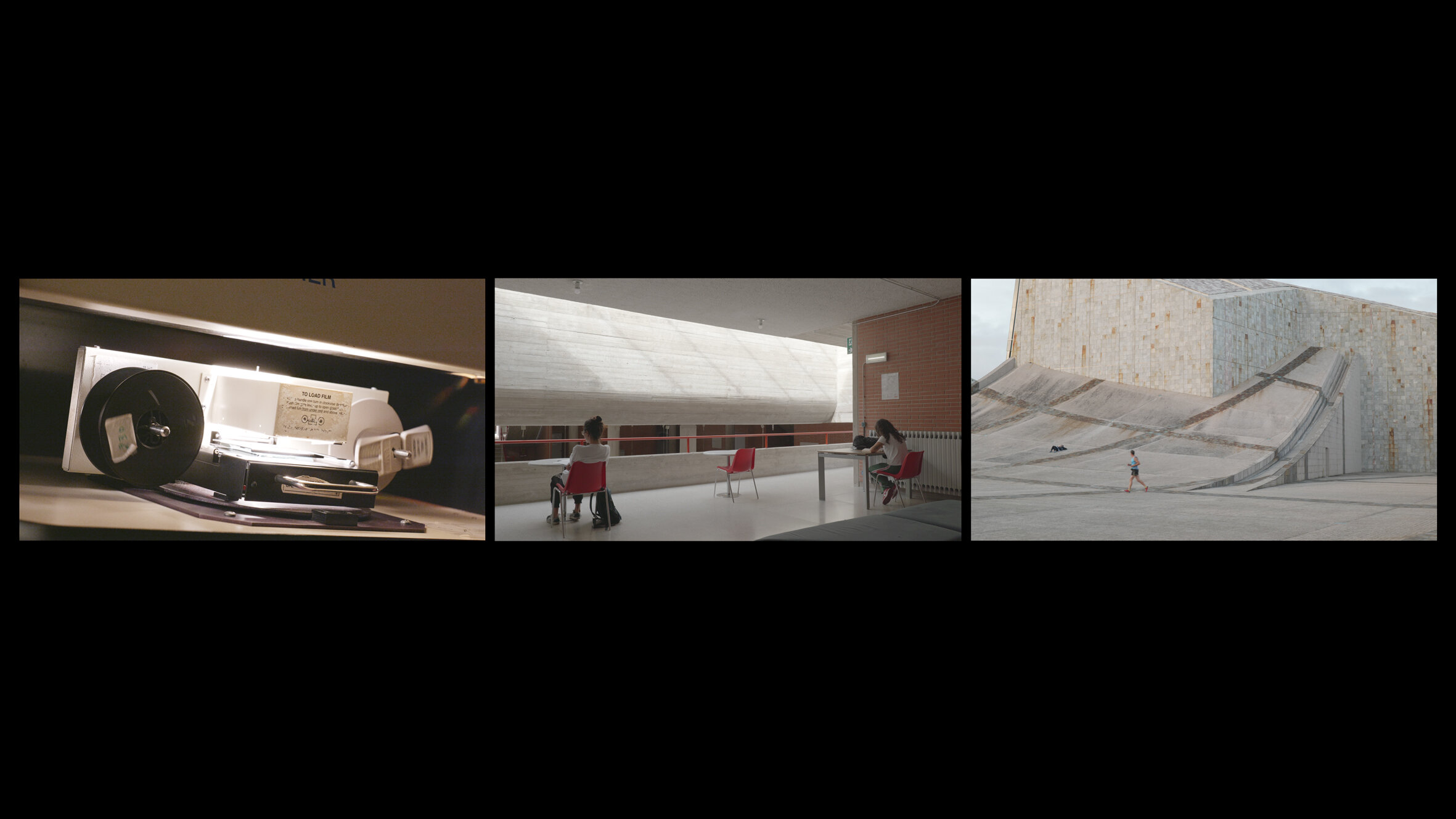3 synchronized HD video channel installation
00:20:50
Realized with the support Direção-Geral das Artes/República Portuguesa – Cultura and Católica - Escola das Artes
Symphony of the Unknown II, 2021
For the Symphony of the Unknown II, Nuno Cera rests his lens on three grand building complexes in southern Europe. The three-screen video and accompanying publication centre around architect Giancarlo de Carlo’s Collegio del Colle in Urbino (1962-1983), architect Arsenio Cordeiro’s Torre do Tombo in Lisbon (1980-1990) and architect Peter Eisenman’s Cidade da Cultura de Galicia in Santiago de Compostela (2001-2012).
There are clear connections between these complexes: they occupy large sites on the edge of their cities; they were all built in the last half-century; they are all concerned with culture and memory. And yet, there are also clear points of divergence. The Collegio del Colle is a university campus, a geometric hilltop city of interweaving classrooms and bedrooms. The Torre do Tombo holds the Portuguese national archive. It is a monument to memory, as well as a place of work, whose precious and rarely seen interior is protected by the gargoyles on its monolithic exterior. And the Cidade da Cultura de Galicia is an incomplete landscape. Intended as a new city for the culture of Galicia, its stone hills sit painfully under-visited and over-funded.
Like a conductor before his players, Cera takes these architectural projects as the tools with which to direct his symphony. The film explores moments of dissonance and harmony between the buildings. Through cuts and parallel frames, it establishes moments of connection and rhythmic synchronicity before moving on: continuing its progression towards the eponymous unknown. The spaces are explored side-by-side. Their characters are revealed across scales from the urban to the handheld through documents and mountains, stairways and shelves, towers and tunnels.
The work is completed by excerpts of essays from writers responding to the atmospheric environments of the sites. Mirko Zardini reflects on a night at the college in Urbino, finding “a city in the form of a university, and a university in the form of a city”. Writing on the Torre do Tombo, Joaquim Moreno encounters a “mythical fortress of our collective memory”. Susana Ventura navigates the empty “eruptions of constructed mass” to face John Hejduk’s towers at the Cidade da Cultura, designed by the architect before his death in 2000 and brought into the scheme by his former-colleague Peter Eisenman. Their words seek meaning in these elusive spaces. They tie abstracted political histories with hard contemporary contexts. Their words – spoken by Shannon Booth, A.R. Salt, and Jeff Wood – veer between the pragmatic and the poetic but are tinged by a shared melancholia. In Galicia, Ventura finds a “future that was always past”; in Urbino, Zardini envies a lost dream; in the Portuguese archive, Moreno clings to collective memories before they disappear.
Quiet behind the drama of the architecture and the contemplation of the texts, Cera conducts the composition. His camera is an eye that moves through the buildings, looking across surfaces and forms, inwards and outwards, to and from the architecture. His edits are a guiding hand hinting at frictions between author and user, architect and construction worker, past and present, known and unknown.
Symphony of the Unknown Part II expands upon Symphony of the Unknown (2013-2016), a three-screen video and accompanying publication centred around European housing projects: the Barbican Centre in London (Chamberlin, Powell and Bon, 1965-1982), Quinta da Malagueira in Évora (Álvaro Siza, 1973-1977) and Les Espaces d’Abraxas in Noisy-le-Grand (Ricardo Bofill, 1978-1982).
-George Kafka







